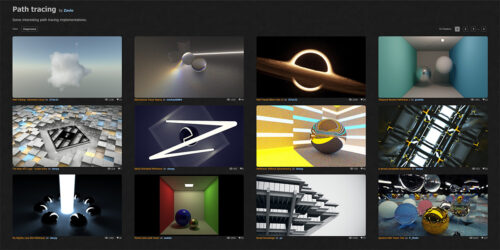I have gathered a list of path tracing shaders on ShaderToy.
Path tracing is a surprisingly simple technique to render realistic images. This would be my definition if you are unfamiliar with the term. But if you already have experience with various ray tracing techniques, I would probably say that path tracing is a remarkably elegant solution to the rendering equation. You can implement a toy path tracer in a weekend or, if you’ve already done it a few times before, within 25 minutes.
Recently I was documenting myself on path tracing, and some of the techniques that can be used, like next event estimation, bidirectional path tracing, Russian roulette, etc. This is a case where ShaderToy can be an invaluable source of examples and information, and so I was browsing path tracing shaders there. As the number of open tabs was starting to get impractical, I decided to use the “playlist” feature of ShaderToy to bookmark them all.
You can find the list here: Path tracing, on ShaderToy.
The examples of path tracers listed include very naive implementations, hacky ones, rendering features like advanced BRDF, volumetric lighting or spectral rendering, or various noise reduction techniques such as next event estimation, bidirectional path tracing, multiple importance sampling, accumulation over frames with temporal reprojection, screen space blue noise, or convolutional neural network based denoising.
Some of those shaders are meant to be artworks, but even the technical experimentation ones look nice, because the global illumination inherent to path tracing tends to generate images that are pretty.

